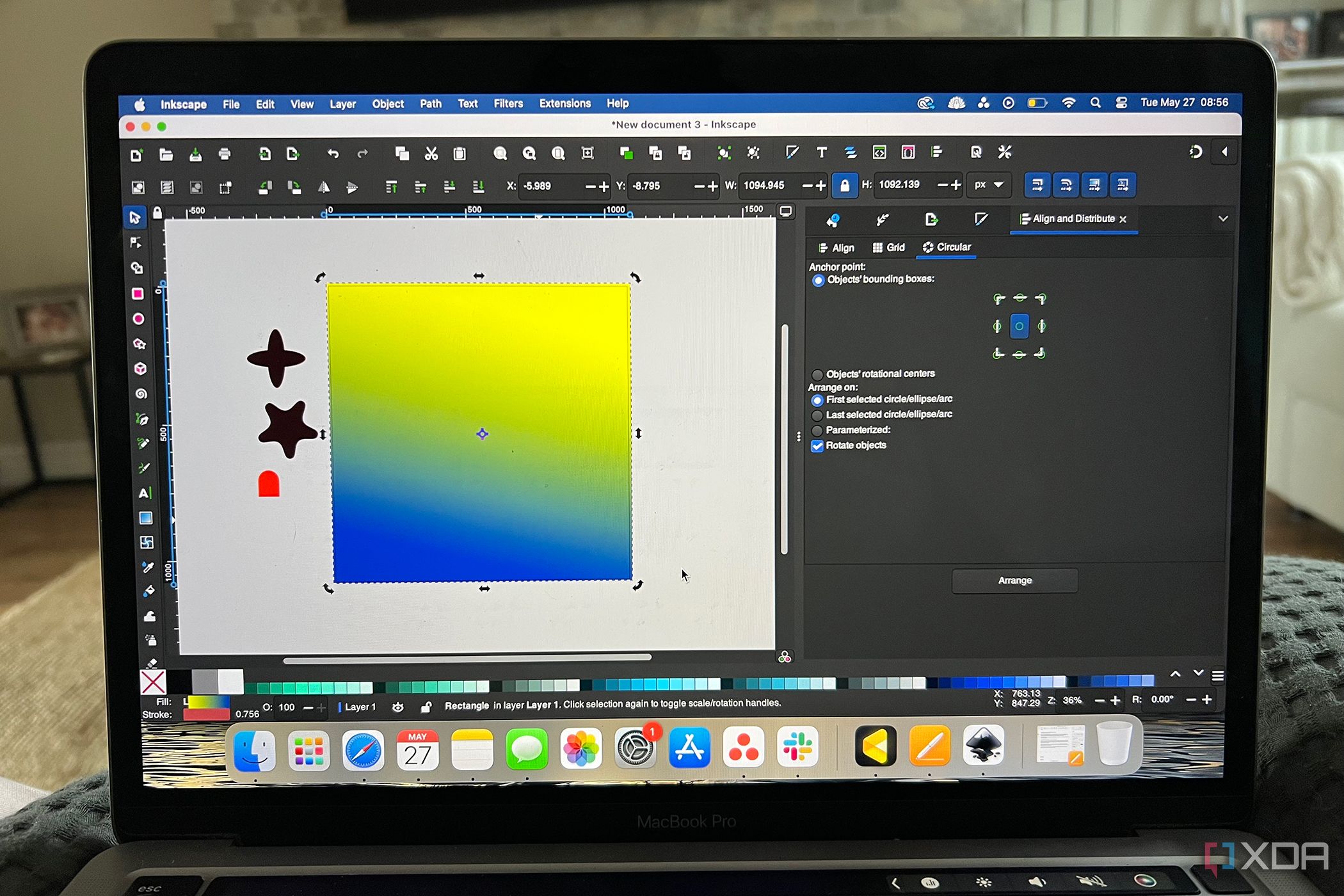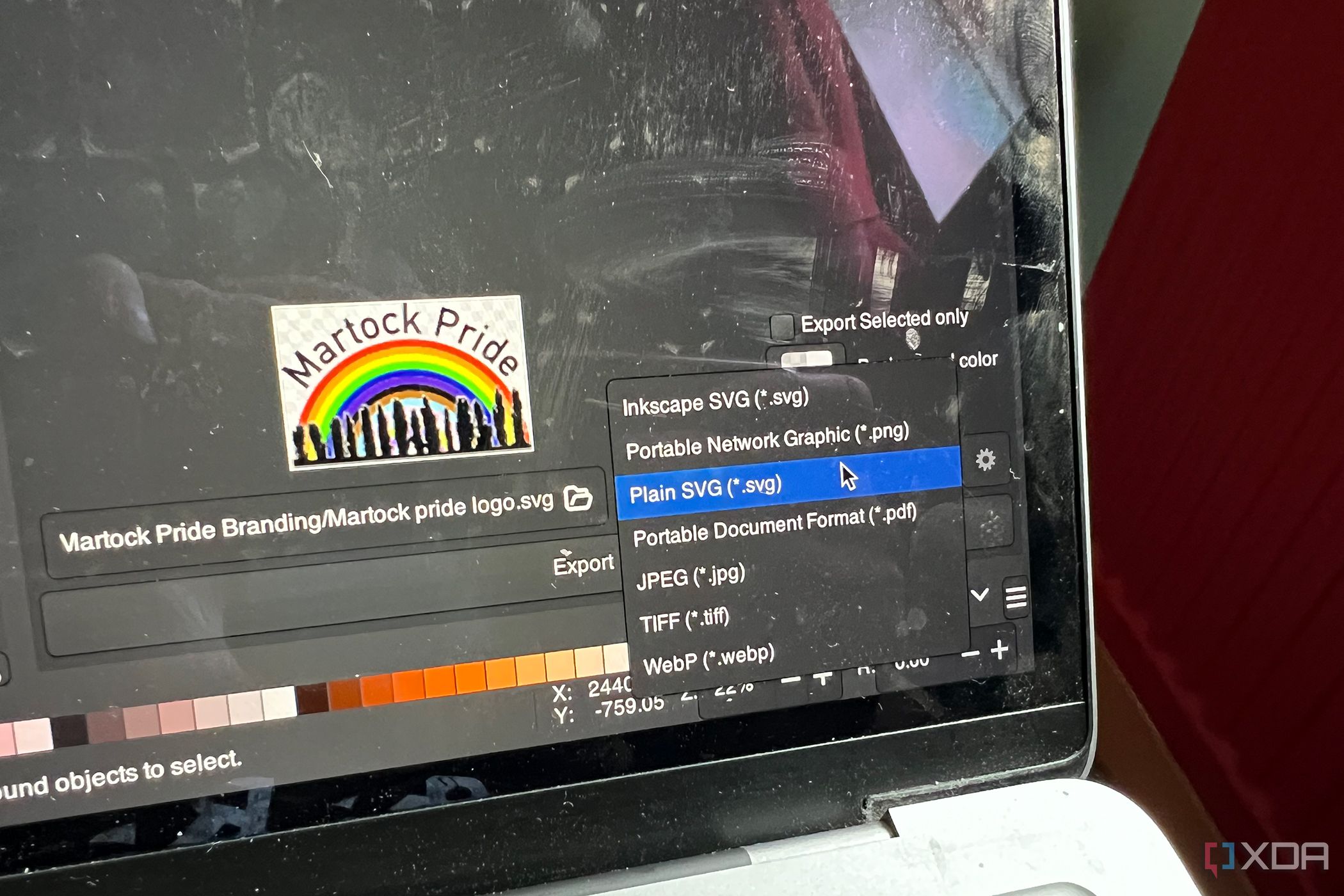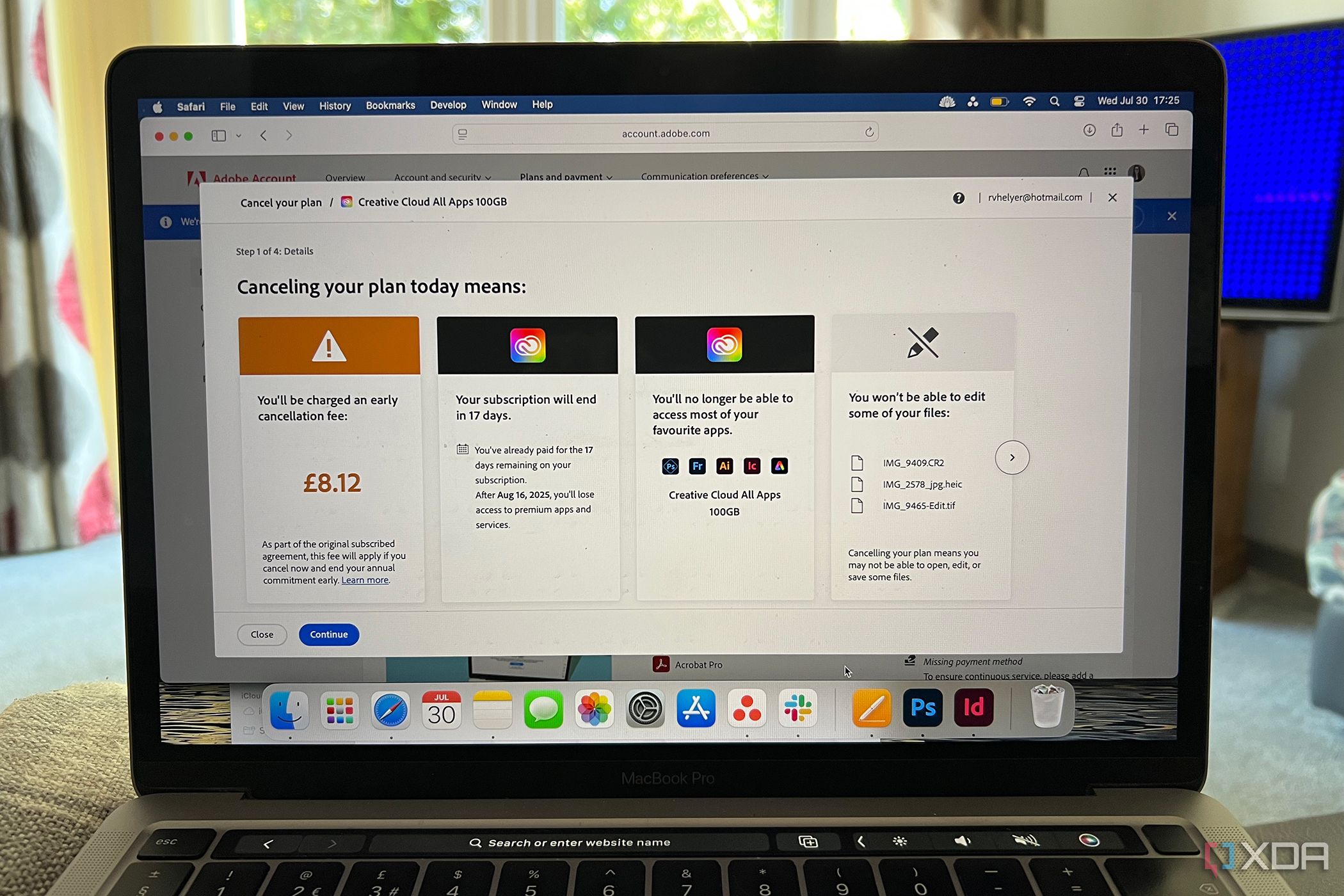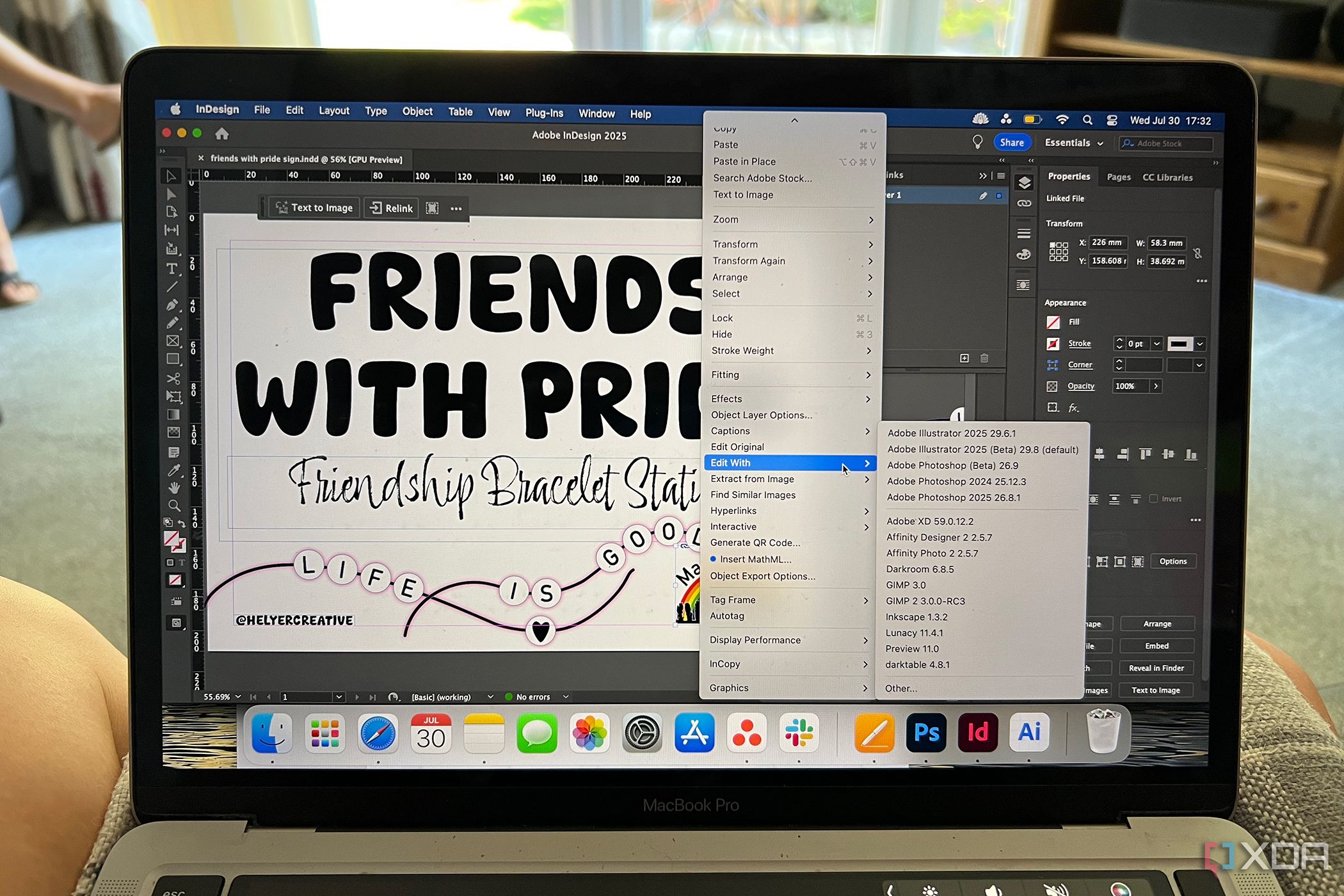Canceling an Adobe subscription is no mean feat. It can take months of consideration before taking the plunge and pulling the creative money plug. After a long time questioning whether I should avoid Adobe tools and testing out a myriad of creative software alternatives, these are the five major things I should have considered before canceling my Adobe subscription. Hindsight is a wonderful thing, and if my lack of forethought can benefit anyone else, then it’s a win for me, at least.
5 How long it takes to learn new software
I relied on Adobe for too long

Although the outcomes of what you can achieve using alternative, creative software may be similar to those of most Adobe tools, the input is vastly different.
It takes a long time to learn and become proficient in using creative software — I barely remember the learning curve with Adobe, though. But it has been well over a decade, so it’s easy to forget the difficulties.
It isn’t as easy or simple as just quitting Adobe and moving to new tools. Your productivity will be down for a while as you learn new tools, interfaces, terminologies, and shortcuts. It might seem simple, but it really slows you down for a while.
4 Not all file formats are created equal
Adobe’s file management works well

Even though many other creative software programs let you save in progressive formats like SVG, PDF, or even Adobe-specific formats like PSD and AI, these formats are not all created equally. I have been so frustrated opening PDFs in tools like GIMP or Scribus only to find they’re not editable the same way as if I’d opened them in Acrobat or even Illustrator.
Just because a program lets you open a file, it doesn’t mean the file opens the way it should. Oftentimes, the layers are merged together, preventing most types of editing. Sometimes the text is vectorized, making it impossible to edit or adapt.
This just doesn’t happen with Adobe tools. A PSD file can be saved and opened with ease in Photoshop; an AI file can be saved and opened with ease in Illustrator. SVG files are always opened in editable layers and can be further edited in Illustrator or used to animate in After Effects or Adobe Express. PDFs are editable in most Adobe tools, too.
It’s frustrating to find new tools to work with each different format.
3 How much it costs to cancel
You’re on the hook for a year’s plan

Canceling an Adobe subscription is not as simple as canceling most other subscription types. Sure, you might have issues canceling your gym membership — I suppose an Adobe subscription is equally frustrating to leave.
Even if you’re on a monthly plan — which I’ve been on for years — the actual contract is for a year, despite only paying monthly. This is confusing, and it’s where most people get caught out when they decide to cancel.
Canceling your Adobe subscription isn’t as simple as canceling, stopping your payments, and not having access to the products anymore. If you cancel anywhere from 14 days after signing up until 11 months after the subscription started, you’re pretty much on the hook for the cost of the entire term left of the year.
It isn’t any cheaper to cancel an Adobe subscription as it is just keep it until the year runs out. Of course, it’s very easy to forget to cancel at the end of the yearly plan, and Adobe provides little in the way of reminders so you don’t roll over and accidentally start a new annual subscription.
If you do outright cancel, you’ll pay the excess as well as lose access to the tool. But that’s something most people don’t consider when canceling.
It’s important to consider the timing of canceling, not least so it coincides with the natural end of your Adobe contract’s term, but you can also benefit from other external timings and factors. Adobe often partakes in seasonal sales, like Black Friday sales. You could benefit from a cheaper plan by signing up during this time, but you can also game the system by switching to a sale plan mid-contract and then canceling within 14 days of signing up. This means you can cancel without paying the hefty cancellation fee.
2 No more “free” background removal
My biggest loss saying goodbye to Adobe
I’ve been a paying Adobe customer for close to 15 years, and some aspects of Adobe features have simply become second nature, like easy access to background removal and saving transparent images.
I can achieve this through a host of Adobe tools, including Photoshop, Illustrator, Adobe Express, and phone apps like Photoshop Mobile and Lightroom Mobile. I don’t have to research to find the best tool, and I certainly don’t feel like I’m paying extra to access good background removal. Of course, I am paying extra for it, though.
Creating and saving images with transparent backgrounds or graphics with no background is one of my biggest uses for Adobe tools, and I don’t even think twice about it. Finding an alternative with the same flexibility for both raster and vector results without compromising quality or needing to pay is going to be difficult. This is something I wish I’d thought of when I was questioning quitting Adobe.
Although you can remove backgrounds or save transparent images in many Adobe tools, there isn’t a single Adobe app or software that allows free users to do so. It’s a major perk that you’ll give up in its entirety upon canceling an Adobe plan.
1 Less seamless compatibility elsewhere
The Adobe ecosystem is powerful

One of the biggest perks of being a subscriber to the Adobe Creative Cloud is the seamless compatibility between so many of its tools. You can easily link assets across your project documents, making it easier to update or change aspects of your design without opening and editing every instance of an asset’s use.
Other than the Affinity Suite, there aren’t many large creative suites of tools that offer compatibility in the same way. A lack of integration across files and assets just adds a small inconvenience to your creative workflow in other software.
Don’t cancel Adobe without thought
We live in a time with tons of great alternative creative software that can easily rival Adobe’s Creative Suite of tools. But after over a decade of reliance on Adobe access, there are some solid considerations you need to recognize before canceling, even when most considerations are easy to fix or overlook. Whether it’s simply a change of workflow, ease of access, or needing to dedicate more time to creative work, you shouldn’t quit Adobe without thinking hard if it’s the right decision first.
.png)











 English (US) ·
English (US) ·